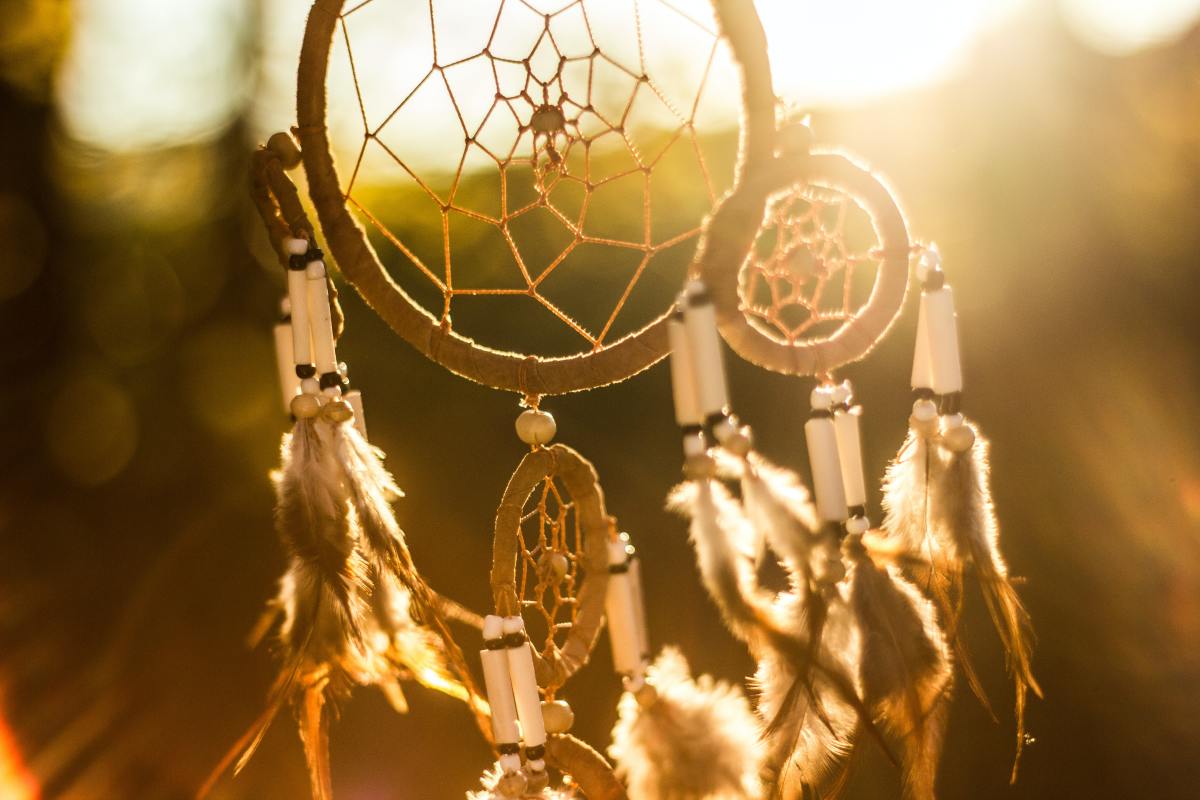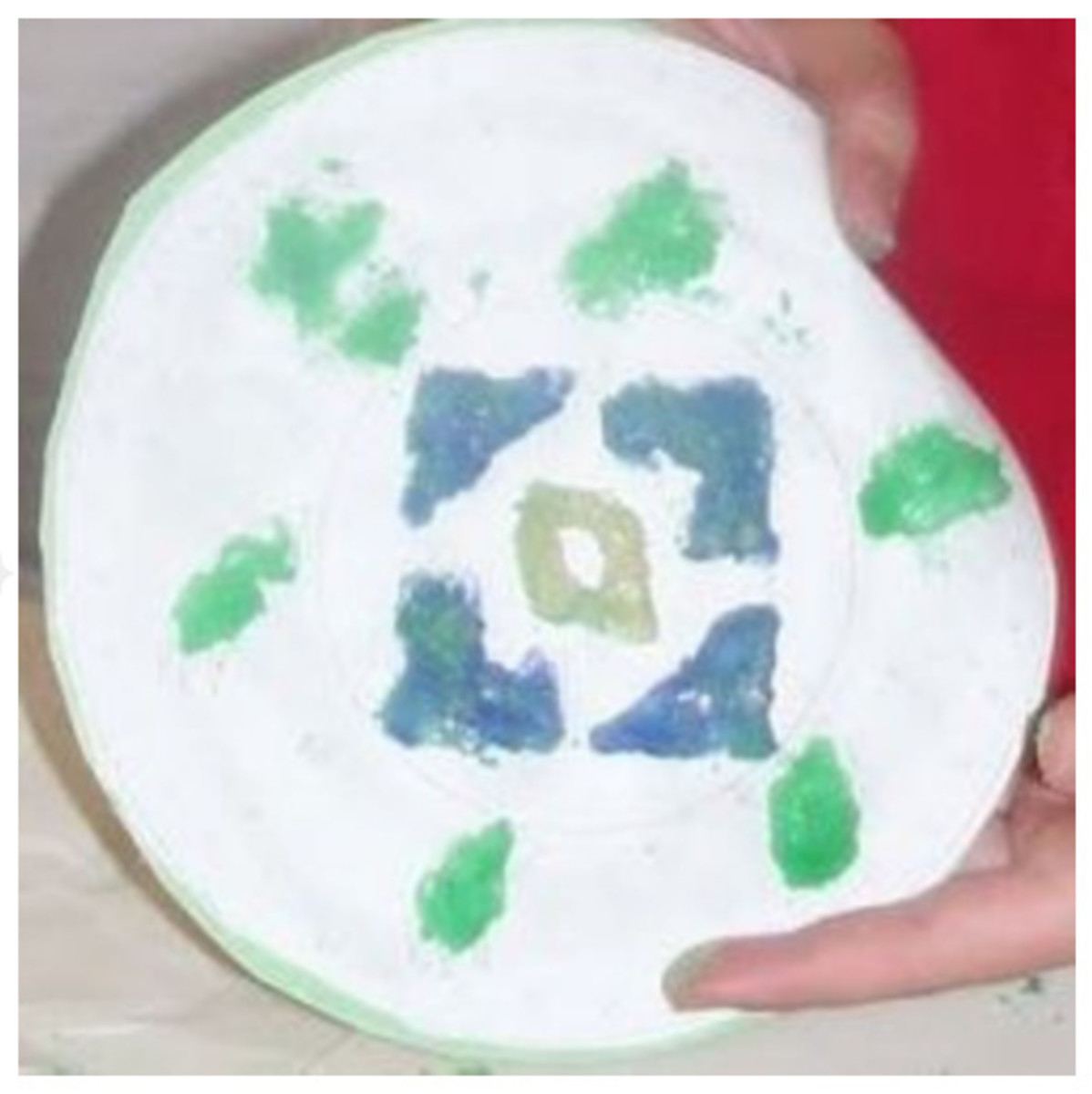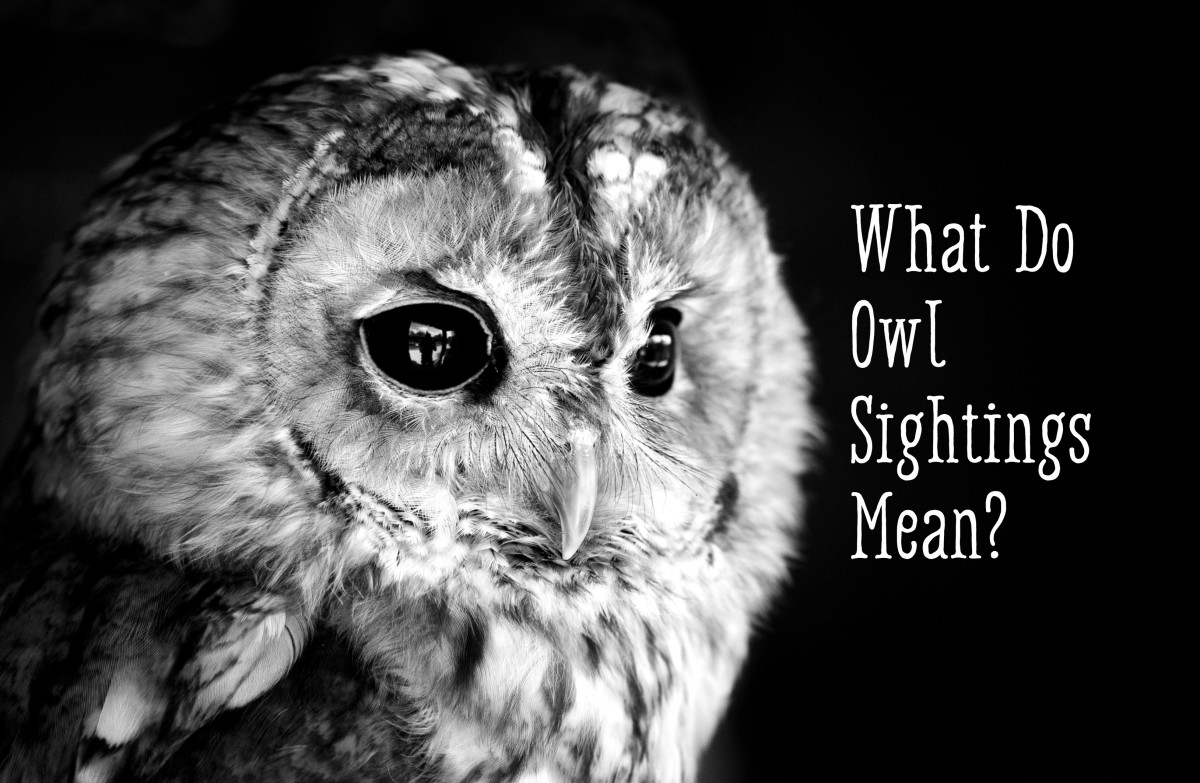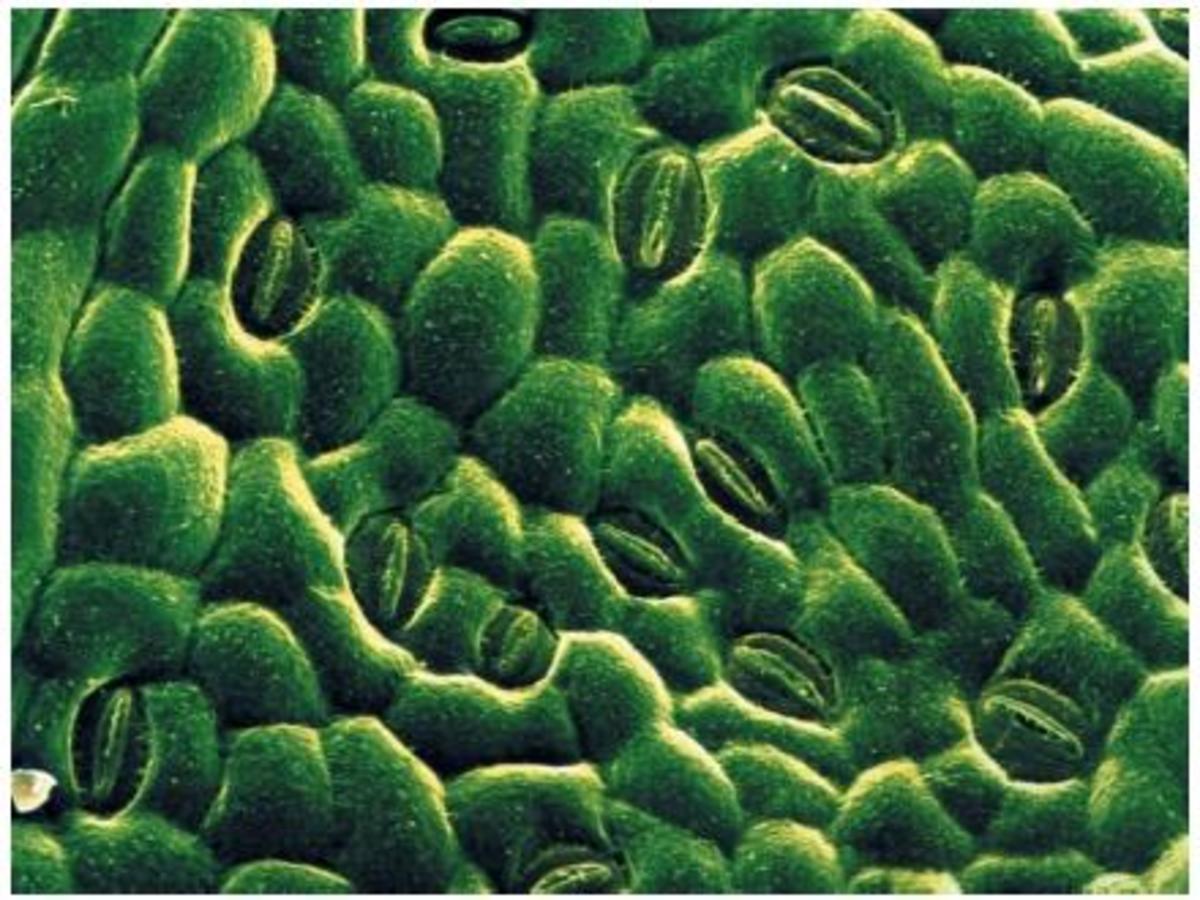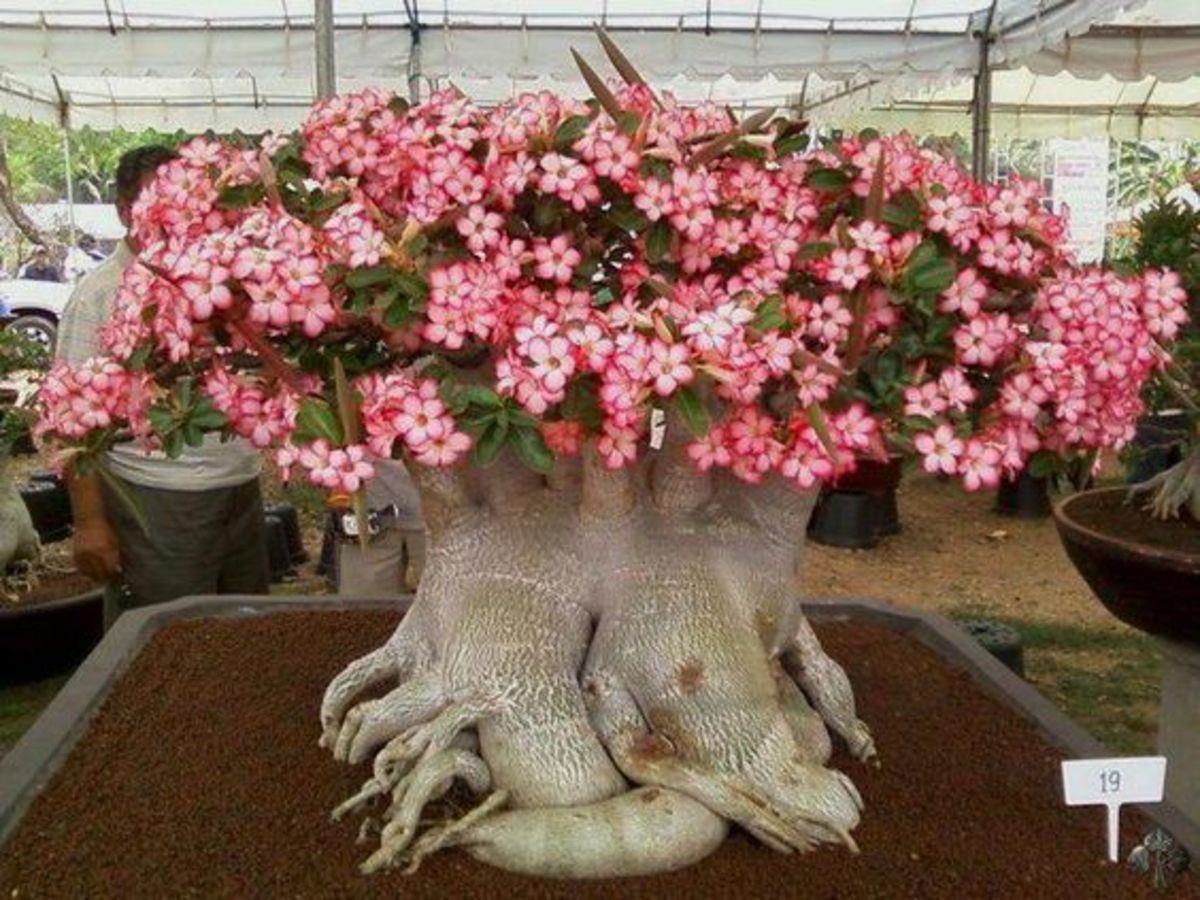Plants, Flowers, Herbs and Spices
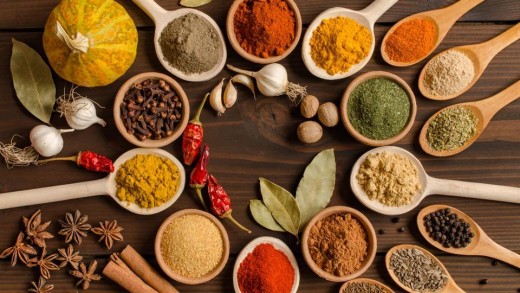
Herbs and Spices
Did you know that herbs and spices have meanings? The symbolism of spices varies from culture to culture, but universally most are known to mean the following :
Basil - (Sweet)Good wishes, love, serious intentions
Basil - Happiness, growing of love, fertility
Cinnamon - Stability, soothing warmth
Cloves - Dignity, ability to withstand troubles
Coriander - Magic, health
Cumin - Engagement, listening, togetherness
Dill - Safety, security, courage
Fennel - Strength, vision
Garlic - Strength, wards off the bad/negative
Ginger - Civility, traditions
Marjoram - Happiness
Mustard - Ability to get things out, deal with challenges
Nutmeg - Sensuality, effervescence
Onion - Happiness
Oregano - Joy, appreciation of what you have
Parsley - Festivity, friendship
Pepper - (Black, Green, & White)Wealth, adventure
Rosemary - Fidelity, love
Sage - Wisdom, long life
Salt - Protection, preservation
Sesame - Magic
Sugar - Sweetnes
Tarragon - Helping each other shine, bringing out the best in each other
Thyme - Courage, sacrifice
Turmeric - Adaptiveness, ability to make the most of what you have
What flowers are safe to consume? Here is a sample picture below.
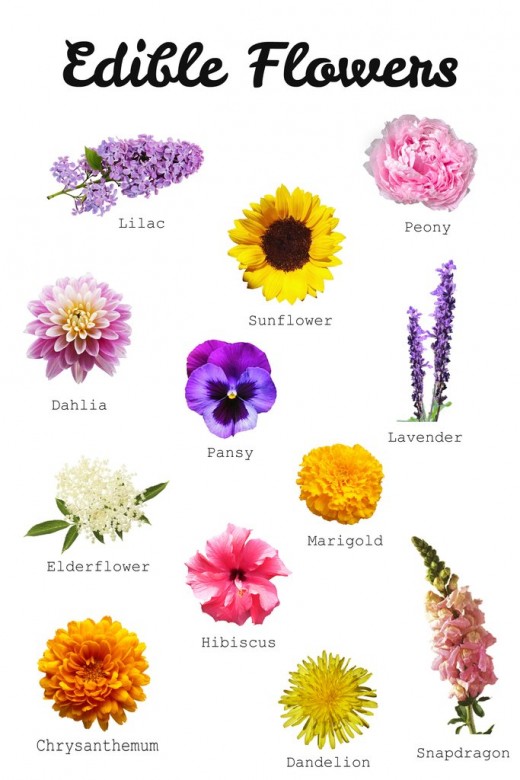
Plant names with pictures
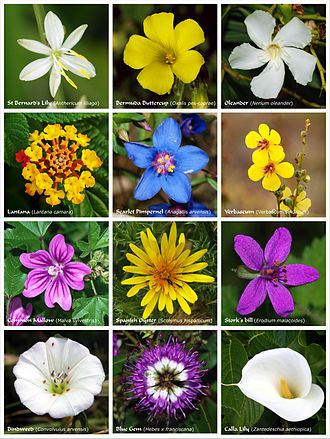
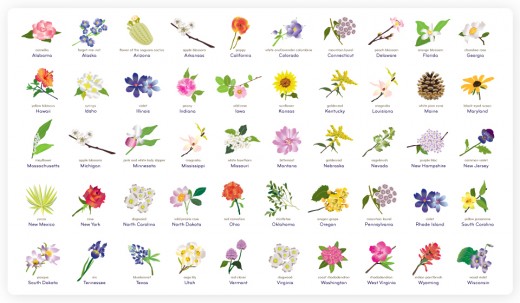
Botany : Many parts of a plant
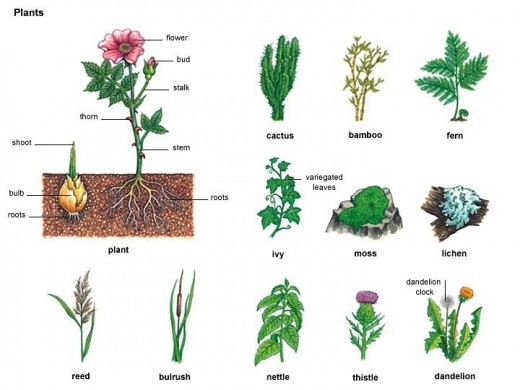
Plant Symbolism Guide
Similar to animals, plants and trees have symbolic meanings. If a certain plant or tree comes into your life on any given day, then take the time to see the symbolic meaning behind this occurrence.
It is not by coincidence that much of our plant life is green, which correlates to the Heart Chakra. If you are ever feeling down, then go outdoors and absorb all of the wonderful green “heart chakra” energy that surrounds you.
Also, if you want to attract certain things in your life, such as love, happiness or spirituality, you may consider planting some of these plants in or outside of your home.
Various folk cultures and traditions assign symbolic meanings to plants. Although these are no longer commonly understood by populations that are increasingly divorced from their old rural traditions, some survive. In addition, these meanings are alluded to in older pictures, songs and writings.
In no way should the following be assumed to a guide to plant usage and none should be taken without medical advice.
Acicia: Protection, Psychic Powers
Adam & Eve Roots: Love, Happiness
Adders Tongue: Healing
African Violet: Spirituality, Protection
Agaric: Fertility
Agrimony: Protection, Sleep
Ague Root: Protection
Alfalfa: Prosperity, Anti-hunger, Money
Alkanet: Purification, Prosperity
Allspice: Money, Luck, Healing
Almond: Money, Prosperity, Wisdom
Aloe: Protection, Luck. Due to its ability to survive where other plants do not it is regarded as a healing plant. It is good for spells that are to sustain the body or to dispel discomfort.
Althea: Protection, Psychic Powers
Alyssum: Protection, Moderating Anger
Amaranth: Healing, Protection, Invisibility
Anemone: Health, Protection, Healing
Angelica: Exorcism, Protection, Healing, Visions
Apple: Love, Healing, Garden Magic, Immortality
Apricot: Love
Arabic Gum: Purify negativity and evil
Arbutus: Exorcism, Protection
Asafoetida: Exorcism, Purification, Protection
Ash: Protection, Prosperity, Sea Rituals, Health
Native American Symbolism: The ash symbolizes peace of mind, sacrifice, sensitivity
and higher awareness. The Wabanaki Indian tribes, who craft their baskets from ash splints, have a tradition that humans were first created from black ash trees as well. The Chitimacha Indians believed ash was poisonous to rattlesnakes, and would use ash canes to drive away snakes. Some Great Plains tribes, such as the Ponca, used green ash wood instead of cottonwood for their sacred Sun Dance poles. Ash bark and roots were also used as medicine herbs in a number of tribes.
Aspen: Eloquence, Anti-Theft
Native American Symbolism: The Aspen symbolizes clarity of purpose, determination and overcoming fears and doubts
Aster: Love
Avens: Exorcism, Purification, Love
Avocado: Love, Lust, Beauty
Bachelor’s Buttons: Love
Balm, Lemon: Love, Success, Healing
Balm of Gilead: Love, Manifestations, Protection, Healing
Bamboo: Protection, Luck, Hex-Breaking, Wishes. An extremely versatile plant and has many uses, it represents growth and versatility.
Banana: Fertility, Potency, Prosperity
Banyan: Luck
Barley: Love, Healing, Protection
Basil: Love, Exorcism, Wealth, Flying, Protection
Bay: Protection, Psychic Powers, Healing, Purification, Strength
Bayberry: Symbolizes illusions and appearances, it is used for visions and divining.
Bean: Protection, Exorcism, Wart Charming, Reconciliations, Potency, Love
Native American Symbolism: Beans are one of the Three Sisters of the northeastern tribes, so called because corn, squash, and beans were traditionally planted together by Native American farmers. Beans are also used as a clan symbol in some Native American cultures. Tribes with Bean Clans include the Hopi tribe, whose Bean Clan is called Murzibusi. Some eastern tribes, like the Lenape, Shawnee, and Iroquois, also have a Bean Dance among their tribal dance traditions.
Bedstraw/Fragrant: Love
Beech: Wishes. Because of its smooth grain it was often used for writing surfaces and has come to represent ancient knowledge through objects and writings. It is often used as a replacement for oak.
Native American Symbolism: The Beech symbolizes tolerance, past knowledge and
softening criticism
Beet: Love
Belladonna: astral projection *DEADLY POISON!!
Benzoin: Purification, Prosperity
Bergamot, Orange: Money
Be-Still: Luck
Betony/wood: Protection, Purification, Love
Birch: Protection, Exorcism, Purification
Native American Symbolism: The Birch symbolizes truth, new beginnings and cleansing of the past. The birch tree was of great importance to Native American peoples due to its tough, flexible, highly waterproof sheets of bark. Birchbark has been used by Native Americans for everything from papering the exteriors of canoes and houses to making baskets, artwork, and maps. In some Ojibwe (Chippewa) communities, birchbark was said to be a sacred gift from the culture hero Wenabozho and was used to ceremonially wrap the bodies of the dead for burial. Ojibwe folklore has it that birch trees are immune to lightning strikes, and that therefore these are good trees to take shelter under during a thunderstorm.
Bistort: Psychic Powers, Fertility
Bittersweet: Protection, Healing
Blackberry: Healing, Money, Protection. This was considered by all to be the food of the faeries and it was extremely taboo to eat them within Celtic Britain.
Bladderwrack: Protection, Sea Spells, Wind Spells, Money, Psychic Powers
Bleeding Heart: Love
Bloodroot: Love, Protection, Purification. This herb is used to heal wounds and aid with regeneration. It symbolizes healing, strength and growth.
Native American Symbolism: Bloodroot, also known as bloodwort or Canada puccoon, is a white flower native to the eastern part of North America. “Puccoon” is one of many American plant names to have a Native American etymology: it comes from the Powhatan Indian word poughkone or pohcoons, which was recorded by early Virginia colonists as meaning “red paint” or “red dye.” Both this Indian name and the English name “bloodroot” come about because of the red sap oozed by the roots of these flowers, which was used by many tribes as a dye for clothing and baskets and for face paint. Bloodroot has also been used by Native American people as a poison (the bloodroot plant is highly toxic) and, in small doses, as a medicine herb. In some Algonquin communities bloodroot is associated with love, and men would wear bloodroot paint when they went courting.
Bluebell: Luck, Truth. These are very enchanted plants it is believed that their bells call the faeries to their midnight processions.
Blueberry: Protection
Blue Flag: Money
Bodhi: Fertility, Protection, Wisdom, Meditation
Boneset: Protection, Exorcism. It was used to help set broken bones as well as treat wounds. It symbolizes fixing, mending, regeneration and strengthening.
Borage: Courage, Psychic Powers
Bracken: Healing, Rune Magic, Prophetic Dreams
Brazil Nut: Love
Briony: Image Magic, Money, Protection
Bromeliad: Protection, Money
Broom: Purification, Protection, Wind Spells, Divination
Buchu: Psychic Powers, Prophetic Dreams
Buckthorn: Protection, Exorcism, Wishes, Legal Matters
Buckwheat: Money, Protection
Burdock: Protection, Healing
Butterfly Weed: Like the butterfly it is considered a good plant to use for healing transformation and rebirth.
Cabbage: Luck
Cactus: Protection, Chastity. With its ability to store water it symbolizes hidden treasure as well as endurance and the ability to adapt to situations and environments.
Calamus: Luck, Healing, Money, Protection
Camellia: Riches
Camphor: Chastity, Health, Divination
Caper: Potency, Lust, Luck
Carawy: Protection, Lust, Health, Anti-theft, Mental Powers
Cardamon: Lust, Love
Carnation: Protection, Strength, Healing
Carob: Protection, Health
Carrot: Fertility, Lust
Cascara Sagrada: Legal Matters, Money, Protection,
Cashew: Money
Castor: Protection
Catnip: Cat Magic, Love, Beauty, Happiness. Most animals either find this a powerful stimulant or a sedative, due to this seemingly contradictory effect it is used in spells for deception or paradox.
Cattail: Lust. A water growing plant that turns ponds into swamps then into dry earth this plant symbolizes strong earth energy, balance and stability.
Native American Symbolism: Cattails, also known as bulrushes, had a number of practical uses in traditional Native American life: cattail heads and seeds were eaten, cattail leaves and stalks were used for weaving mats and baskets, cattail roots and pollen were used as medicine herbs, and cattail down was used as moccasin lining, pillow stuffing, and diaper material. In the southwestern tribes, cattails also have more symbolic meaning. They are associated with water and rain by the Pueblo tribes, and used ceremonially in rain dances. The Mexican Kickapoos associate cattails with water serpents and make offerings to the snake people before gathering cattails. The Navajo believed cattail leaves were a protective charm against lightning. And many southwestern tribes used cattail pollen as a traditional face paint.
Cedar: Healing, Purification, Money, Protection. Excellent at repelling negative energy. It is used for protection and warding away negative spirits.
Native American Symbolism: The Cedar symbolizes cleansing, protection, prosperity & healing. Cedar is one of the most important Native American ceremonial plants, used by many tribes as an incense and purifying herb. Cedar is especially associated with prayer, healing, dreams, and protection against disease. Many Salish tribes consider the cedar tree a symbol of generosity and providence, and had special rituals regarding the felling of cedar trees. Cedar is commonly used as part of sweat lodge ceremonies, and is also one of the herbs frequently included in medicine bundles and amulets. Cedar leaves and bark are used as medicine plants in many tribes as well.
Celandine: Protection, Escape, Happiness, Legal Matters
Celery: Mental Powers, Lust, Psychic Powers
Centaury: Snake Removing
Chamomile: Money, Sleep, Love, Purification
Cherry: Love, Divination
Native American Symbolism: The Cherry tree symbolizes strong expression, rebirth, new awakenings and compassion
Chestnut: Love
Chickweed: Fertility, Love
Chicory: Removing Obstacles, Invisibility, Favors, Frigidity
Native American Symbolism: Chicory is a wild-flower that was not originally native to North America– it was brought over from Europe, probably in the 1700’s or late 1600’s. Because of this, chicory does not play a large role in Native American mythology. But like other newcomer plants, such as dandelions, chicory did become part of 18th and 19th century Native American traditions. The chicory plant was associated with the sky in some tribes (due to its sky-blue color), and chicory roots were used as a medicine herb among eastern tribes.
Chili pepper: Fidelity, Hex Breaking, Love
Native American Symbolism: The chili pepper is one of several plants with a name that comes from a Native American language– “chili” comes from the Nahuatl (Aztec Indian) name for the plant, xilli. The chili pepper’s alternate name, cayenne, also comes from a Native American name: the Tupi word kyynha.
Chili peppers were primarily used as a food seasoning in Native North American tribes, although they were used in some rituals by the Hopi and Pueblo tribes of the Southwest. In Mexican Indian tribes, chili peppers played a much more spiritually important role. Many Maya tribes ascribed healing and protective powers to chili peppers, and even today some Mexican mothers are in the habit of feeding their children spicy food when they fall ill.
China Berry: Luck
Chrysanthemum: Protection. A very decorative plant it denotes nobility and royalty. It is particularly good for speeding up the rate and flow of spells.
Cinchona: Luck, Protection
Cinnamon: Spirituality, Success, Healing, Power, Psychic Powers, Lust Protection, Love
Cinquefoil: Money, Protection, Prophetic Dreams, Sleep
Citron: Psychic Powers, Healing
Cloth of Gold: Understand animal languages
Clove: Protection, Exorcism, Love, Money
Clover: Protection, Money, Love, Fidelity, Exorcism, Success. With its three-fold leaves it was very special to the Celts symbolizing balance and the triad. A four leaf clover is very lucky, and it is said that wearing one within your hat will allow you to see fairies.
Club Moss: Protection, Power
Coconut: Purification, Protection, Chastity
Cohosh, Black: Love, Courage, Protection, Potency
Coltsfoot: Love, Visions
Columbine: Courage, Love
Comfrey: Safety during travel, Money
Copal: Love, Purification
Native American Symbolism: Copal is an important ceremonial herb of Mexico and Central America, long used as a sacred incense by the Maya, Nahuatl (Aztec), and Zoque peoples. It is not actually a plant but a plant product, being the resin of the torchwood family of trees (which are sometimes also referred to as “copal trees” in Mexico.) “Copal” is a Spanish variant of the Nahuatl word copalli, meaning “incense.” The Mayan names for copal resin are pom, poom, or poomte. Copal played a very important role in the ancient Mayan religion; copal was considered the food of the gods and was burned as offerings to them. Today, although few if any Maya or Nahuatl people continue to worship the old gods, copal is still used for ritual purification and other traditional ceremonies, and is often burned at mainstream Mexican celebrations such as the Day of the Dead.
Coriander: Love, Health, Healing
Corn: protection, luck, divination. One of humans most treasured plants, it has always been a great source of nutrition as well as providing medicine. It is closely related to the sun, harvest, health and the earth goddess.
Native American Symbolism: Corn, also known as maize, is the most important food crop of the Americas, cultivated by hundreds of different tribes. Even some tribes who were too nomadic or lived too far north to grow it themselves had corn as part of their diet, since they traded extensively with corn-farming neighbors. Corn is one of the Three Sisters of the northeastern tribes, so called because corn, squash, and beans were traditionally planted together by Native American farmers. Corn played an important mythological role in many tribes as well– in some cultures Corn was a respected deity, while in others, corn was a special gift to the people from the Creator or culture hero. In addition to its importance as a food source, corn also played a ceremonial role in many tribes, with sacred corn pollen or cornmeal being used as ritual adornment and spiritual offerings.
Although the word “corn” comes from a general Old English word for a cereal seed (related to “kernal,”) the word “maize” has Native American origins: it comes from the Spanish version of the indigenous Taino word for the plant, maiz. The names of several corn dishes also come from Native American languages: hominy, pone and succotash (from Eastern Algonquian languages), sagamite (from Cree,) and chicha (from the Nahuatl, or Aztec language.)
Corn is a common clan symbol in many Native American cultures. Tribes with Corn Clans include the Muskogee Creek tribe (whose Corn Clan was named Atchialgi or Vce’vlke in the Muskogee language), the Navajo, the Mohave, and the Pueblo tribes of New Mexico (many of whom have multiple Corn Clans such as the Blue Corn Clan and Yellow Corn Clan.) Many tribes, such as the Caddo and the Pueblo tribes, also have a Corn Dance among their tribal dance traditions.
Cotton: Luck, Healing, Protection, Rain, Fishing Magic
Cowslip: Healing, Youth, Treasure Finding
Crocus: Love, Visions
Cubeb: Love
Cuckoo-flower: Fertility, Lover
Cucumber: Chastity, Healing, Fertility
Cumin: Protection, Fidelity, Exorcism
Curry: Protection
Cyclamen: Fertility, Protection, Happiness, Lust
Cypress: Longevity, Healing, Comfort, Protection. This is regarded as a sad tree, as it was used to build funeral pyres it is associated with mourning.
Daffodil: Love, Fertility, Luck
Daisy: Lust, Luck
Damiana: Lust, Love, Visions
Dandelion: Divination, Wishes, Calling Spirits
Native American Symbolism: Dandelions were not originally native to North America– the now-ubiquitous yellow flowers were brought over from Europe in the 1600’s. Dandelions spread across the continent rapidly, reaching the West Coast long before the Europeans themselves ever did, and became well-known by many tribes as a food item and medicine herb.
Datura: Hex Breaking, Sleep, Protection
Deerstongue: Lust, Psychic Powers
Devils Bit: Exorcism, Love, Protection, Lust
Devils Shoestring: Protection, Gambling, Luck, Power, Employment
Dill: Protection, Money, Lust, Luck
Dittany of Crete: Manifestations, Astral Projection
Dock: Healing, Fertility, Money
Dodder: Love, Divination, Knot Magic
Dogbane: Love
Dogwood: Wishes, Protection. This tree symbolizes charm and finesse; it is used to enhance personality as well as aid in social stature.
Native American Symbolism: Dogwoods are symbols of protection and safety in southeastern Native American tribes. In Northwestern tribes such as the Quileute and Makah, the dogwood symbolized good luck and dogwood berries were eaten during religious ceremonies. Dogwood fruit was a popular food item for many Native Americans, especially the Interior Salish tribes, but to Blackfoot people, the dogwood tree was associated with masculinity and women used to refrain from eating its fruit. The bark and roots of dogwood trees were frequently used as medicine herbs and dyes, as well. Dogwood sap, however, is toxic and was used in some tribes as poison.
Dragons Blood: Love, Protection, Exorcism, Potency
Dulse: Lust, Harmony
Dutchmans Breeches: Love
Ebony: Protection, Power
Echinacea: Strengthening Spells
Edelweiss: Invisibility, Bullet-Proofing
Elder: Exorcism, Protection, Healing, Prosperity, Sleep
Elecampane: Love, Protection, Psychic Powers
Elm: Love. It is associated with shadows, darkness, and depression and was used to mark off tainted areas of the countryside.
Native American Symbolism: The Elm symbolizes wisdom, strength of will and intuition
Endive: Lust, Love
Eryngo: Travelers Luck, Peace, Lust, Love
Eucalyptus: Healing, Protection. It is seen as a protecting and nurturing tree. It can also symbolize ‘sloth’ due to its narcotic foliage.
Euphorbia: Purification, Protection
Eyebright: Mental Powers, Psychic Power. As the name suggests it has long been associated with being farsighted and clearness of vision. It is used for seeing faeries, the truth, and far sight.
Fennel: Protection, Healing, Purification
Fenugreek: Money
Fern: Rain Making, Protection, Luck, Riches, Eternal Youth, Health, Exorcism. The favored plant of the pixies and wherever these grow you are supposed to find them nearby. It also represents ancient knowledge and archaism.
Native American Symbolism: Ferns had many practical uses in traditional Native American life: they were eaten as greens, boiled into herbal teas, and woven into mats. Ferns are associated with water by many tribes and considered important medicine plants– different species of ferns were used by Native Americans to treat everything from digestive problems to arthritis to childbirth pains. Virginia moonwort, a type of fern known as “rattlesnake masterpiece,” was said to cure snakebite and ward off snakes. And maidenhair ferns were a symbol of traditional dancing in many Northwest Coast tribes, and used as part of traditional Northern California dance regalia.
Feverfew: Protection. So called because of its ability to banish fever it is good for healing.
Fig: Divination, Fertility, Love
Figwort: Health, Protection
Fireweed: One of the first plants to grow after a fire, and it is also extremely useful providing humans with many uses. For this reason it is seen as a good plant to have as an ally.
Flax: Money, Protection, Beauty, Psychic Powers, Healing
Fleabane: Exorcism, Protection, Chastity
Foxglove: Protection
Frankincense: Protection, Exorcism, Spirituality
Fumitory: Money, Exorcism
Fuzzy Weed: Love, Hunting
Galangal: Protection, Lust, Health, Money, Psychic Powers, Hex breaking
Gardenia: Love, Peace, Healing, Spirituality
Garlic: Protection, Healing, Exorcism, Lust, Anti-Theft
Gentian: Love, Power
Geranium: Fertility, Health, Love, Protection
Ginger: Love, Money, Success, Power
Ginseng: Love, Wishes, Healing, Beauty, Protection, Lust. This plant concerns clarity of the mind and is used to enhance focus.
Goats Rue: Healing, Health
Goldenrod: Money, Divination
Golden Seal: Healing, Money. It is mainly used as a cleaning agent and in spells it is used to purify and cleanse.
Gorse: Protection, Money
Gotu Kola: Meditation
Gourd: Protection
Grain: Protection
Grains of Paradise: Lust, Luck, Love, Money, Wishes
Grape: Fertility, Garden Magic, Mental Powers, Money
Grass: Psychic Powers, Protection. This is a hardy plant that is the first to grow in most places it symbolizes food, concealment and hardiness.
Ground Ivy: Divination
Groundsel: Health, Healing
Hawthorn: Fertility, Chastity, Fishing Magic, Happiness
Hazel Luck, Fertility, Anti-Lightning, Protection, Wishe
Heather: Protection, Rain Making, Luck
Heliotrope: Exorcism, Prophetic dreams, Healing, Wealth, Invisbility
Hellebore, Black: Protection *POISON*
Hemlock: Destroy sexual drives *POISON*
Hemp: Healing, Love, Vision, Meditation
Henbane: *POISON* Not used
Henna: Healing
Hibiscus: Lust, Love, Divination. This plant symbolizes beauty and fertility, its 5 petal flowers speak of protection and its random growth that of chaos. It is used for spells involving randomness, glamour, and repelling negativity.
Hickory : Legal Matters
High John the Conquerer: Money, Love, Success, Happiness
Holly: Protection, Anti-Lightning, Luck, Dream Magic
Honesty: Money, Repelling Monsters
Honeysuckle: Money, Psychic Powers, Protection
Hops: Healing, Sleep
Horehound: Protection, Mental Powers, Exorcism, Healing
Horse Chestnut: Money, Healing
Horseradish: Purification, Exorcism
Horsetail: Snake Charming, Fertility
Houndstongue: Tying dogs tongues
Houseleek: Luck, Protection, Love
Huckleberry: Luck, Protection, Dream Magic, Hex Breaking
Hyacinth: Love, Protection, Happiness
Hydrangea: Hex Breaking
Hyssop: Purification, Protection
Indian Paint Brush: Love
Iris: Purification, Wisdom
Irish Moss: Money, Luck, Protection
Ivy: Protection, Healing
Jasmine: Love, Money, Prophetic Dreams
Jobs Tears: Healing, Wishes, Luck
Joe-pye weed: Love, Respect
Juniper: Protection, Anti-theft, Love, Exorcism, Health. This is an excellent tree for healing and cleansing especially in curbing the spread of poisons or disease.
Native American Symbolism: Juniper plants are associated with protection in many different Native American tribes. The Interior Salish and Northwest Coast tribes used juniper to banish evil spirits and protect themselves from witchcraft. Among the southwestern Pueblos, junipers were believed to counteract ‘ghost sickness,’ a malady which afflicted bereaved relatives or people who handle the bodies of the dead. Plains Indian tribes, such as the Dakota, Cheyenne, and Pawnee, often hung juniper boughs on their tepees or burned them in the camp fire to keep their homes safe from storms. And in many tribes people, especially hunters, would carry a spring of juniper as a protective charm or rub juniper branches on their bodies before embarking on a dangerous journey to protect themselves from grizzly bears, monsters, or general bad luck. Juniper is one of the herbs frequently included in medicine bundles and amulets. Juniper berries were also eaten by people in some Southwestern and Southern California tribes, and juniper leaves were frequently used as medicinal herbs.
Kava-Kave: Visions, Protection, luck
Knotweed: Binding, Health
Ladys mantle: Love
Ladys slipper: Protection
Native American Symbolism: Ladyslippers, also known as moccasin flowers, are North American wildflowers from the orchid family. These flowers got their names, as well as several folktales about them, from their vague resemblance to a soft-bodied shoe. Besides inspiring folklore about their origins, ladyslippers were also useful to Woodland Indian tribes of the eastern United States and Canada, who used their roots as medicine herbs.
Larch: Protection, Anti theft. This is one of the few conifers that sheds its pines in winter. It is often used to rim ceremonial drums. It may be used for protection and inducing visions.
Larkspur: Health, Protection
Lavendar: Love, Protection, Sleep, Chastity, Longevity, Purification, Happiness, Peace
Native American Symbolism: Lavender plants are not native to the Americas; they were brought over by Europeans, probably in the 1800’s. Although Native Americans did begin using some newly arrived plants as medicine immediately, and folklore about the new plants sometimes even cropped up (dandelions are an example of this), references to “lavender” in Native American folklore and ethnographies are usually actually referring to desert lavender, a flowering shrub with some physical similarities to lavender that actually is completely unrelated to lavender. Desert lavender, also known as lavender bushmint, grows in parts of Arizona, southern California, and northern Mexico, and has long been used as a medicinal herb by Native American tribes who live there.
Leek: Love, Protection, Exorcism
Lemon: Longevity, Purification, Love, Friendship
Lemongrass: Repel snakes, Lust, Psychic powers
Lemon Verbena: Purification, Love
Lettuce: Chastity, Protection, Love, Divination, Sleep
Licorice: Love, Lust, Fidelity
Life Everlasting: longevity, Health, Healing
Lilac: Exorcism, Protection
Lily: Protection, Breaking Love spells. This symbolizes sorrow and is closely associated to death. It is used to symbolize danger, caution and deadly beauty.
Lily of the Valley: Mental Powers, Happiness
Lime: Healing, Love, Protection
Linden: Protection, Immortality, Luck, Love, Sleep
Liquidamber: Protection
Liverwort: Protection, Love
Looestrife: Peace, Protection
Lotus: Protection, Lock-Opening. Used to symbolize intellect, mental energies and illumination. It is used to clear the mind, purify and inspire.
Lovage: Love
Love Seed: Love, Friendship
Lucky Hand: Employment, Luck, Protection, Money, Travel
Mace: Psychic Powers, Mental Powers
Maguey: Lust
Magnolia: Fidelity
Mahogany, mountain: Anti-Lightning
Maidenhair: Beauty, Love
Male Fern: Luck, Love
Mallow: Love, Protection, Exorcism
Mandrake: Protection, Love, Money, Fertility, Health. With its root having the appearance of a man and it reportedly screaming when it is removed from the ground it was often used for curses and negative spells.
Maple: Love, Longevity, Money. Special for its sugar and syrup it represents success and abundance.
Native American Symbolism: The Maple symbolizes the tree of offering, generosity, balance, promise and practicality. The maple tree was of particular importance to the Algonquian tribes of the northwestern United States and western Canada, who developed the art of processing maple sap into maple sugar, maple syrup, and taffy candy. Maple sap was often considered a gift from the Creator and/or the culture hero, and many aspects of Algonquian culture and tradition came to revolve around maple sugaring. For these reasons, the maple leaf symbol was an important design motif in Algonquian beadwork. Maple trees were important to Native peoples in other ways as well. Maple wood was used to make tools and furniture, and its bark was used as a medicine herb. The Rocky Mountain maple is considered one of the sacred Life Medicines of the Navajo tribe.
Marigold: Protection, Prophetic Dreams, Legal Matters, Psychic Powers
Marjoram: Protection, love, Happiness, Health, Money
Master Wort: Strength, Courage, Protection
Mastic: Psychic Powers, Manifestations, Lust
May Apple: Money
Meadow Rue: Divination
Meadowsweet: Love, Divination, Peace, Happiness
Mesquite: Healing
Mimosa: Protection, Love, Prophetic Dreams, Purification
Mint: Money, Love, Lust, Healing, Exorcism, Travel, Protection
Mistletoe: Protection, Love, Hunting, Fertility, Health, Exorcism. Extremely sacred to the druids, when found growing on Oaks it is very magical and is a great catalyst for all spells.
Molukka: Protection
Moonwort: Money, Love
Moss: Luck, Money
Native American Symbolism: Moss was viewed as a very practical plant in most Native American tribes. Since moss is one of the most naturally absorbent materials available, it was valued by Native Americans for use in bandages, baby diapers and bedding, sponges, and paint applicators. Dried moss was also used as a firestarter in some tribes. Moss is often used as an example of Native American cultural beliefs about finding the best uses of everything in nature, no matter how lowly. Some mosses, like Spanish moss and club moss, were also used as medicine herbs.
Mugwort: Strength, Psychic Powers, Protection, Prophetic Dreams, Healing, Astral Projection. This plant represents clumsiness, awkwardness, and ugliness. As may be assumed this plant is used to infer these qualities onto our enemies.
Native American Symbolism: Mugwort and Sagewort are the English names for this plant, and both are confusing: mugwort is an Old English name for a European herb which was applied to the related but quite different American plant after colonization, and sagewort is a general term which is used to refer to dozens of different herbs including this one. The Chumash Indian name for the plant is Molush, and the Paiute name is translated as Dream Plant, a name that has been gaining in popularity. The name “dream plant” comes because mugwort is believed by many California Indian tribes to improve people’s dreams, making it more likely for them to remember them and interact with them for spiritual purposes. For this reason mugworts would often be burned as incense or dried and sewn into a pillow to ensure positive and spiritually meaningful dreams. Some Miwok people also wore mugwort leaves to keep away ghosts and evil dreams. In addition to these important roles as a dreaming agent, mugwort was also used as a medicine herb to cure headaches, women’s reproductive complications, and other ailments.
Mulberry: Protection, Strength
Mullein: Courage, Protection, Health, Love, Divination, Exorcism
Mustard: Fertility, Protection, Mental Powers
Mushrooms: Considered to be very enchanted especially regarding fairy rings. They were also used to induce visions.
Myrrh: Protection, Exorcism, Healing, Spirituality. Myrrh symbolizes power, strength, vitality, and mysticism it can be used to increase ones energy and stamina.
Myrtle: Love, Fertility, Youth, Peace, Money
Nettle: Exorcism, Protection, Healing, Lust. Though prickly it was also a great source of food, it is useful for spells that give an indication of future dangers or pitfalls.
Native American Symbolism: Stinging nettles most often appear in Native American legends as comic relief, with the bumbling arrogance of a trickster character (or the gullible stupidity of one of his victims) ending in an ignominious tumble into the nettles. In reality, Native American people knew perfectly well how to avoid being stung by nettle plants and in fact, how to eat them safely in salads (by boiling the leaves in water and discarding the water.) Stinging nettles also played a role in traditional Native American herbal medicine, particularly to treat skin ailments. Ceremonially, stinging nettles were most important in the Pacific Northwest, where men rubbed nettles on their bodies in fishing, whaling, and seal-hunting rituals. This was variously said to provide strength, protect against weather, or mask human odors. In the Kawaiisu tribe of southern California, stinging nettles were one of several herbs considered to be a source of dream power, and a person who wished to have a medicine vision might walk through nettle plants so that the stings would prepare him for the dreams.
Norfolk Island Pine: Protection, Anti Hunger
Nuts: Fertility, Prosperity, Love, Luck
Oak: Protection, Health, Money, Healing, Potency, Fertility, Luck
Native American Symbolism: The oak symbolizes strength of character and courage. Oak is considered a medicine tree by many eastern and midwestern tribes, associated with strength and protection. Individual oak trees of great size and longevity have often been considered sacred and used as spiritual and civic centers for important tribal gatherings (such as weddings, peace conferences, and naming ceremonies.)
Oats: Money
Oleander: Symbolizing majestic yet deadly beauty because it is poisonous it is good for spells that involve charms, charisma, and attraction.
Olive: Healing, Peace, Fertility, Potency, Protection, Lust
Onion: Protection, Exorcism, Healing, Money, Prophetic Dreams, Lust
Orange: Love, Divination, Luck, Money
Orchid: Love
Oregon Grape: Money, Prosperity
Orris: Love, Protection, Divination
Palm, Date: Fertility, Potency
Pansy: Love, Rain Magic, Love, Divination
Papaya: Love, Protection
Papyrus: Protection
Parosela: Hunting
Parsley: Love, Protection, Purification. This is a very popular herb, it represents stability and normalcy. It can be used to stabilize or ground emotions.
Passion Flower: Peace, Sleep, Friendship
Patchouly: Money, Fertility, Lust
Pea: Money, Love
Peach: Love, Exorcism, Longevity, . Fertility, Wishes
Pear: Lust, Love
Pecan: Money, Employment
Pennyroyal: Strength, Protection, Peace. Seen as a majestic and noble plant, it is used to improve ones own status and stature.
Peony: Protection, Exorcism
Pepper: Protection, Exorcism
Peppermint: Purification, Sleep, Love, Healing, Psychic Powers
Pepper Tree: Purification, Healing, Protection
Periwinkle: Love, Lust, Mental Powers, Money, Protection
Persimmon: Changing Sex, Healing, Luck
Native American Symbolism: The persimmon is one of several plants with a name that comes from a Native American language– “persimmon” is an early colonial word that comes from the Powhatan name for the fruit, pichamin (also spelled putchamin, pessemmin, pushemin, parsemen, and a number of other ways… spelling was not standardized in the 1600’s even for English, let alone Native American languages.) Persimmons were a favorite fruit of many tribes, either eaten plain or cooked into sweet puddings. The persimmon tree’s bark and syrup were also used as medicine herbs, particularly for sore throats and mouth ailments.
Plot Weed: Protection
Pimento: Love
Pimpernel: Protection, Health
Pine: Healing, Fertility, Protection, Exorcism, Money
Native American Symbolism: The pine tree symbolizes creativity, peace and harmony. Pines are symbolically and ceremonially important trees to many Native American people, but their meaning varies from tribe to tribe. The pine tree is a symbol of longevity to the Algonquian tribes of the northeast, and to the Great Lakes tribes, such as the Anishinabe and the Potawatomi, pine trees also represent wisdom and harmony with nature. The Iroquois tribes saw the pine tree as a symbol of peace, and burned pine wood as an incense to pacify ghosts and banish nightmares. Among tribes of the Great Basin and Plateau, pine trees were often associated with rain, and pine cones or wood were burned in hopes of changing the weather to be more favorable. In the Southwest, the pinion pine is considered sacred by some tribes; its sweet-smelling wood is burned as incense, and its pine gum is used as protection against witchcraft. Pine pitch and bark are also used as medicine herbs in many tribes, and pine nuts are an important food source for many Western tribes, particularly in California and the Southwest. Pine needles are also used in some traditional kinds of Native American basketry.
Pineapple: Luck, Money, Chastity
Pipsissewa: Money, Spirit Calling
Pistachio: Breaking Love Spells
Plantain: Healing, Protection, Strength, Snake Repelling
Plum: Healing
Plumeria: Love
Poke: Courage, Hex Breaking
Pomegranate: Divination, Luck, Wishes, Wealth, Fertility
Poplar: Money, Flying
Poppy: Fertility, Love, Sleep, Money, Luck, Invisibility
Potato: Image Magic, Healing
Prickly Ash: Love
Primrose: Protection, Love
Purslane: Sleep, Love, Luck, Protection, Happiness
Quassia: Love
Quince: Protection, Love, Happiness
Radish: Protection, Lust
Ragweed: Courage
Ragwort: Protection
Raspberry: Protection, Love. Often used to detect the fertility of soil it is used for spells that require detection or preserving things as its berries were used to make jam. Reed The reed symbolizes flexibility, rapid growth, and expansion. Its stalks can also be used for making flutes. It is good for music, growth, and expansion. Rose With its beautiful flowers and its deadly thorns this is another plant which symbolizes deadly beauty. It is used for glamour, enchantments, and love potions.
Rattlesnake Root: Protection, Money
Rhubarb: Protection, Fidelity
Rice: Protection, Rain, Fertility, Money
Roots: Protection, Power, Divination
Rose: Love, Psychic Powers, Healing, Love, Divination, Luck, Protection
Rosemary: Protection, Love, Lust, Mental Powers, Exorcism, Purification, Healing, Sleep, Youth
Rowan: Psychic Powers, Healing, Protection, Power, Success
Rue: Healing, Health, Mental Powers, Exorcism, Love. As the name suggests this plant governs sadness and sorrow. It is used to create depression but can also be used to help banish it.
Rye: Love, Fidelity
Saffron: Love, Healing, Happiness, Wind Raising, Lust, Strength, Psychic Powers.
Sage: Immortality, Longevity, Wisdom, Protection, Wishes
Native American Symbolism: Sage is one of the most important Native American ceremonial plants, used by many tribes as an incense and purifying herb. Sweetgrass symbolizes protection and healing in many Native cultures, and is considered to drive out evil influences and ward off bad luck. Sage is burned as a spiritual cleanser before many traditional ceremonies, and is also one of the herbs frequently included in medicine bundles and amulets.
Sagebrush: Purification, Exorcism
St.Johns Wort: Health, Power, Protection, Strength, Love, Divination, Happiness
Sandalwood: Protection, Healing, Exorcism, Spirituality
Sarsaparilla: Love, Money
Sassafras: Health, Money
Savory/Summer: Mental Powers
Scullcap: Love, Fidelity, Peace
Senna: Love
Sesame: Money, Lust
Shallot: Purification
Skunk Cabbage: Legal Matters
Slippery Elm: Halts Gossip
Sloe: Exorcism, Protection
Snakeroot: Luck Money
Snakeroot/black: Love, Lust, Money
Snapdragon: Protection
Solomons Seal: Protection, Exorcism
Sorrel Wood: Healing, Health
Southern Wood: Love, Lust, Protection
Spanish Moss: Protection
Spearmint: Healing, Love, Mental Powers
SpiderWort: Love
Spikenard: Love
Spruce: It is a versatile tree that is a fast grower and proves dominant within its territory. Its wood is good at storing/conducting energy and it is seen as good to use when bargaining with Earth elementals.
Native American Symbolism: Spruce trees are mythologically important plants among Southwestern tribes, where they are symbols of the sky and directional guardians of the north. According to Hopi myth, the spruce tree was once a medicine man, Salavi, who transformed himself into a tree. For this reason, spruce trees are considered particularly sacred to the Hopis, who use spruce boughs to adorn kachina dancers. In the Pima flood myth, the father and mother of the Pima people survived the deluge by floating in a ball of spruce pitch. Among northern tribes, spruce trees (like other evergreens) are associated with peace and protection. Spruce is a particular symbol of good luck to the Salish tribes, and spruce roots are used as fiber for weaving basketry regalia by many Northwest Coast tribes. Northern Algonquian tribes used to bundle spruce and fir needles into sachets or herbal pillows to protect against illness.
Squill: Money, Protection, Hex Breaking
Star/anise: Psychic Powers, Luck
Stillengia: Psychic Powers
Straw: Luck, Image Magic
Strawberry: Love, Luck. Used for love spells, its symbolism is that of love, temptation, passion, and rewarded effort.
Native American Symbolism: Besides being a popular food item, strawberries played an important ceremonial role in some tribes. Some California Indian tribes, such as the Pomo, held special Strawberry Festivals or Strawberry Dances, representing the springtime renewal of life. (At least one tribe, the Kashaya, still hold a Strawberry Festival today.) Among the Iroquois, strawberries were symbols of blessing and thanksgiving. To the Cherokee and other southeastern tribes, strawberries were associated with love and happiness. Some Cherokee families still consider it good luck to have strawberries in the house. Strawberry leaves and roots also played a role in traditional Native American herbal medicine. The strawberry is considered one of the sacred Life Medicines of the Navajo tribe.
Sugar Cane: Love, Lust
Sumbul: Love, Luck, Health, Psychic Powers
Sunflower: Fertility, Wishes, Health, Wisdom
Native American Symbolism: Sunflowers were one of the important crops grown in Native American gardens. Some people call sunflowers the “fourth sister,” in reference to the Three Sisters corn, bean, and squash, but this is a recent appellation as far as we know, and we’re not aware of any legends or oral traditions referring to sunflowers this way. Sunflower seeds were an important food crop and source of oil for cooking and cosmetics, and different sunflower varieties were cultivated to produce purple and yellow dyes. Sunflower oil was also believed to treat skin ailments, and sunflowers had a variety of medicine uses in different tribes. Some Native people also saw sunflowers as a symbol of courage, so that warriors would carry sunflower cakes to battle with them or a hunter would sprinkle sunflower powder on his clothing to keep his spirit up.
Sweetgrass: Calling Spirits
Native American Symbolism: Sweetgrass is one of the most important Native American ceremonial plants, used by many tribes as an incense and purifying herb. Sweetgrass symbolizes healing, peace, and spirituality in many Native cultures, and braids of sweetgrass are sometimes left as offerings at graves and sacred sites. Sweetgrass is also one of the herbs frequently included in medicine bundles and amulets. Plains Indian people used to chew sweetgrass during ritual fasts, and it was also used as a medicinal herb in some tribes. Sweetgrass still holds great spiritual importance to many Native Americans today, but these days it is almost always burned as an incense, not chewed or eaten. More prosaically, sweetgrass is also used in traditional basket-weaving. In the myths of some tribes, such as the Ojibwe and Cree, sweetgrass is said to be the eldest of all plants and sometimes referred to as the hair of Mother Earth.
Sweetpea: Friendship, Chastity, Courage, Strength
Sycamore: This tree represents growth, persistence, strength, and endurance.
Native American Symbolism: Sycamore symbolizes ambition
Tamarind: Love
Tamarisk: Exorcism, Protection
Tansy: Health, Longevity
Tea: Riches, Courage, Strength
Thistle: Strength, Protection, Hex Breaking, Healing
Thistle/holy: Purification, Hex Breaking. This plant is also known as Pixies’ Gloves.
Thistle/milk: Snake enraging.
Thyme: health, Healing, Sleep, Psychic Powers, Love, Purification, Courage
Ti: Protection, Healing
Toadflax: Protection, Hex Breaking
Toadstool: Rain Making
Tobacco: Healing, Purification
Native American Symbolism: Tobacco is one of several plants with a name that comes from a Native American language– “tobacco” comes from tabaco, a Taino/Arawak name for the plant that was picked up by the Spanish in the 1500’s. Tobacco is one of the most important Native American ceremonial plants, used by nearly every indigenous tribe of North America (the Inuit are the only exception we know of) and most tribes of Central and South America as well. Even cultures that did no other farming usually raised tobacco, and tribes that couldn’t grow tobacco for themselves often traded with other groups to acquire it. Tobacco was considered a gift from the Creator in many Native American cultures; according to some of them, tobacco smoke is a means of carrying the smoker’s prayers to God. Many tribes have important myths about the origin of the first tobacco. In some North American tribes, tobacco was exclusively farmed by men, and women were forbidden from touching the growing plants. Once it had been harvested, however, Native American men and women both smoked. Tobacco leaves were smoked at rituals, ceremonies, and important social events, and also as medicine for any number of ailments. Tobacco is associated with relaxation, healing, and peace. In some tribes, particularly in North America, the pipes used for smoking tobacco are themselves considered highly sacred. In others, tobacco pipes are purely utilitarian or decorative objects. Tobacco is one of the herbs frequently included in medicine bundles, and is still popularly used as an offering or gift today.
Turmeric: Purification
Turnip: Protection, Ending Relationships
Uva Ursa: Psychic Workings
Valerian: Love, Sleep, Purification, Protection
Vanilla: Love, Lust, Mental Powers
Venus Flytrap: Protection, Love
Vervain: Love, Protection, Purification, Peace, Money, Youth, Chastity, Sleep, Healing. This plant was used to boost energy, strength, and heart rates. The druids saw it as a very powerful plant using it in potions to increase the length and power of their effects.
Vetch/Giant: Fidelity
Vetivert: Love, Hex Breaking, Luck, Money, Anti-Theft
Violet: Protection, Luck, Love, Lust, Wishes, Peace, Healing, they represent being shy, as the flowers often hide behind the large leaves of the plant. They also represent faith, as alluded to in Shakespeare’s Hamlet.
Native American Symbolism: Violets are associated with love and bewitchment in the Iroquois tribes. Violet roots and leaves are also used as medicine herbs in some Native American cultures, and the flowers are sometimes used to make blue dye.
Wahoo: Hex-breaking, Courage, Success
Walnut: Health, Mental Powers, Infertility, Wishes
Water Lily: This plant symbolizes purity and stability in an unstable environment. It is used for spells that require purity or to invoke cultured mannerisms.
Wax Plant: Protection
Wheat: Fertility, Money
Willow: Love, Divination, Protection, Healing
Native American Symbolism: The willow symbolizes inner wisdom, an open mind with the stability and strength of age and experience. The bark of willow trees has been an important medicinal herb since ancient times in nearly all corners of the world (salicylic acid, which comes from willow bark, is the original source aspirin was derived from,) including many different Native American cultures. In addition to the willow tree’s importance as medicine, willow has also been used as a source of red dye and as a major basket-making material in the western tribes (the flexible willow shoots tended to be used for basket-weaving in the southwest, while Northwest Coast tribes like the Quileute used willow bark fiber for their baskets and Northern California tribes tended to use willow roots.) The Plains Indian tribes use willow boughs in the construction of their sweat lodges, and willow catkins were sometimes eaten as a food supplement among the Alaskan tribes. In some Northern California tribes, willow sprigs are carried for spiritual protection; in the Karuk tribe, willow sprigs are attached to boats to protect them from stormy waters. To the Arapaho tribe, the willow tree was a symbol of longevity.
Wintergreen: Protection, Healing, Hex Breaking. Symbolizing coolness, calmness, and refreshment, it is used to soothe fears and to calm the nerves.
Winters Bark: Success
Witch Grass: Happiness, Lust, love, Exorcism
Witch Hazel: Protection, Chastity
Wolfs Bane: Protection, Invisibility
Wood Rose: Luck
Woodruff: Victory, Protection, Money
Wormwood: Psychic Powers, Protection, Love, Calling Spirits. An extremely dangerous, poisonous plant, it is sometimes used to induce visions or to harm spirits.
Yarrow: Courage, Love, Psychic Powers, Exorcism
Native American Symbolism: Some books, especially older botanical books, claim that yarrow plants are not native to North America and that they were introduced by early Europeans. Although we are not botanists, we find that claim extremely hard to believe because we know indigenous words for yarrow in so many Native American languages; meanwhile, we are unaware of any Native American words for yarrow that were borrowed from English, French or Spanish. (Most plants and animals introduced by Europeans have just the opposite situation.) Yarrow also has a more important and longer-standing role in traditional Native American herbalism than do more recent herbal arrivals like dandelions and chicory. Recently published botany books more often seem to recognize multiple different subvarieties of yarrow, suggesting that there were slight genetic differences between Old World and New World varieties of yarrow, and that most yarrow growing wild in North America today is a hybrid form between the two. Whatever the truth of this situation is, yarrow plays an extensive role in the medicine and oral history of Native American tribes throughout North America, particularly used as a poultice for wounds and a treatment for headaches, toothaches, and gastrointestinal problems. Yarrow is considered one of the sacred Life Medicines of the Navajo tribe, and was sometimes burned as a purifying herb by the Anishinabe tribes.
Yellow Evening Primrose: Hunting
Yerba Mate: Fidelity, Love, Lust
Yerba Santa: Beauty, Healing, Psychic Powers, Protection
Native American Symbolism: Yerba santa (also spelled yerbasanta) is the Spanish name for this indigenous southwestern plant. The name just means “holy herb,” and in fact the same name is used to refer to several other completely unrelated plants with medicinal properties (such as Mexican pepper-leaf, for one.) The yerba santa we are referring to on this page has the Latin name of Eriodictyon, the English name of Mountain Balm, and the Miwok name Passaale (or Possalle.) Tribes throughout California, Nevada, Arizona, and northern Mexico used yerba santa as a medicine herb to cure a wide variety of ailments, from asthma to wounds and sores to coughs and colds.
Yew: Raising the Dead
Native American Symbolism: The yew tree is less important to the mythology of Northwestern Native American tribes than other trees like the cedar and spruce. The greatest significance of the yew to Native American culture was how prized its wood was for the construction of traditional archery bows. The Haida name for the yew tree literally means “bow tree,” and yew bows were valued in the northwestern tribes as much as Osage orange bows were in the south. Like other evergreens, yew trees are associated with protection in Northwestern cultures, and their connection with bows make them an occasional symbol of strength and manhood.
Yohimbe: Love, Lust
Yucca: Transmutation, Protection, Purification
Native American Symbolism: Yucca is one of several plants with a name that comes from a Native American language– “yucca” comes from the Taino (Native Caribbean) name for the plant, yuca.
Yucca was a very important plant to traditional Southwest Indian life. Yucca fruits and roots were eaten, and the tough yucca fiber was used to weave baskets and sandals. Yucca leaves are also used ceremonially by the Navajos. Although yucca plants have never been an important food source to southeastern tribes like the Cherokee, they have used the roots of eastern yucca species as medicine herbs, particularly to treat sores and rashes.
Feedback
Was this page helpful?
© 2018 Ryan Christopher Beitler


